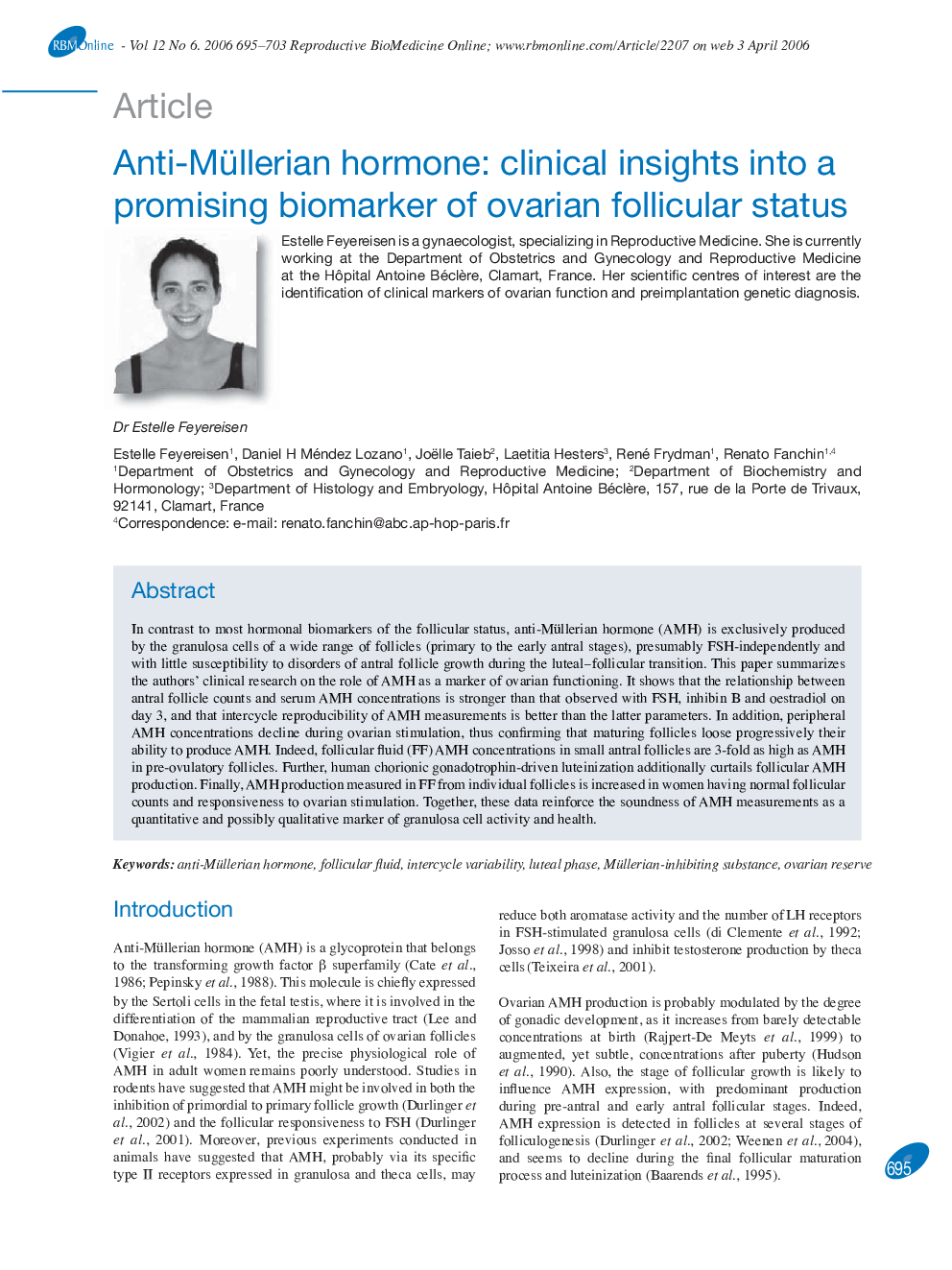| Article ID | Journal | Published Year | Pages | File Type |
|---|---|---|---|---|
| 3973666 | Reproductive BioMedicine Online | 2006 | 9 Pages |
In contrast to most hormonal biomarkers of the follicular status, anti-Müllerian hormone (AMH) is exclusively produced by the granulosa cells of a wide range of follicles (primary to the early antral stages), presumably FSH-independently and with little susceptibility to disorders of antral follicle growth during the luteal–follicular transition. This paper summarizes the authors’ clinical research on the role of AMH as a marker of ovarian functioning. It shows that the relationship between antral follicle counts and serum AMH concentrations is stronger than that observed with FSH, inhibin B and oestradiol on day 3, and that intercycle reproducibility of AMH measurements is better than the latter parameters. In addition, peripheral AMH concentrations decline during ovarian stimulation, thus confirming that maturing follicles loose progressively their ability to produce AMH. Indeed, follicular fluid (FF) AMH concentrations in small antral follicles are 3-fold as high as AMH in pre-ovulatory follicles. Further, human chorionic gonadotrophin-driven luteinization additionally curtails follicular AMH production. Finally, AMH production measured in FF from individual follicles is increased in women having normal follicular counts and responsiveness to ovarian stimulation. Together, these data reinforce the soundness of AMH measurements as a quantitative and possibly qualitative marker of granulosa cell activity and health.
